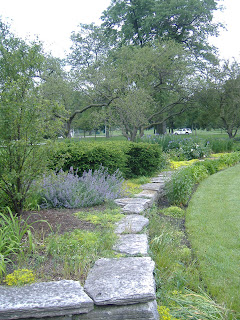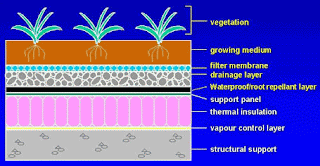Hey Ladies,
I realized that the web link may not work from the blog so I just copied it for your convenience to read. I think this will greatly help give an in depth explanation about why we are doing the public space aspect ofthis project and the need for it in Chicago based on individual communities. There are also great definitions and qualifications for what makes a good public space that we can consider.
This is the direct website and it is overall a great resource for this project. Take some time and look through the articles.......very interesting......SOUNDS FAMILIAR!!!!!!!
www.placemakingchicago.com/places/why.aspA recent global survey showed residents of Chicago are some of the most satisfied and optimistic people in the world. With a population that is expected to grow by 2.8 million over the next 20 years, it is clear this optimism is spreading.
Why Chicago needs great placesA recent global survey showed residents of Chicago are some of the most satisfied and optimistic people in the world. With a population that is expected to grow by 2.8 million over the next 20 years, it is clear this optimism is spreading.
As the Chicago region grows, it is essential to remember what makes Chicagoland truly special. With 552 parks, 33 beaches, one of the world's largest conservatories, an 18-mile linear park along Lake Michigan, and more than 40 community gardens, it is easy to argue public spaces are a big part of what makes Chicago, well, Chicago.
Many of the region's public spaces are officially maintained by the Chicago Park District or Cook County Forest Preserves. Unofficially, the people who live here are the reason these places work. They are the ones who dip their feet in the fountains on a hot summer day and connect with their neighbors at a community dog park. They spend their afternoons reading on a bench, playing pick-up softball games, and hosting impromptu barbecues. Without people, the great public places of Chicago—and thus the region itself—would not thrive.
For nearly 75 years, the Metropolitan Planning Council (MPC) has partnered with everyone from block club presidents to mayors to maintain and enhance the quality of life in the Chicago region. Through our work, we are continually impressed by how much Chicagoans love their city—and by the variety of projects, large and small, residents tackle in an effort to make their neighborhoods and region even better.
MPC's partnership with Project for Public Spaces represents an exciting opportunity and challenge. For more than 30 years, PPS has been a recognized leader in community-based public space planning. Its expertise has been honed by projects in more than 2,000 communities in 26 countries around the world. By partnering with MPC to create a Chicago-specific Placemaking guide book and Web site, PPS recognizes the tremendous vitality of the Chicago region—and encourages us to do more.
The goal of this Web site is to do just that: help Chicagoans recognize the region's amazing public places and inspire action to preserve, improve and create new public spaces. We have identified the necessary tools and resources, and told the stories of people in the region who have brought positive change to their neighborhoods. Now, we ask you, the reader: What can you do to contribute to Chicago's bright future? What vision do you have for Chicago…your neighborhood…or even your own block?
A century ago, Chicago's visionary planner Daniel Burnham encouraged people to, "Make no little plans." Let's expand our imagination beyond Burnham's call to action and instead make lots of little plans! Even the smallest improvement or change can foster community life and beautify neighborhoods. Whether you are new to the area or have lived here your entire life, you can start making great places today!
Why Chicago needs great places
Placemaking Approach: Placemaking workshopPlacemaking Approach: Chicago River DayPlacemaking Approach: Chicago's Sunday Parkways (Open Streets Chicago)Placemaking Approach: The 61st Street Farmers MarketPlacemaking Approach: Bronzeville Coffee and Tea HousePlacemaking Approach: Rogers Park Garden GroupPlacemaking Approach: Friends of the Bloomingdale TrailPlacemaking Approach: Every Block a VillagePlacemaking Approach: Lincoln SquarePlacemaking Approach: 63rd Street Beach Drum CirclePlacemaking Approach: Elmhurst City CentrePlacemaking Approach: Growing HomePlacemaking Approach: Senn Park Unity GardenWhat is placemaking?
Placemaking is a multi-faceted approach to the planning, design and management of public spaces. Put simply, it involves looking at, listening to, and asking questions of the people who live, work and play in a particular space, to discover needs and aspirations. This information is then used to create a common vision for that place. The vision can evolve quickly into an implementation strategy, beginning with small-scale, do-able improvements that can immediately bring benefits to public spaces and the people who use them.
Placemaking can be used to improve all of the spaces that comprise the gathering places within a community—its streets, sidewalks, parks, buildings, and other public spaces—so they invite greater interaction between people and foster healthier, more social, and economically viable communities.
But Placemaking is not just the act of building or fixing up a space; it is a process that fosters the creation of vital public destinations—the kind of places where people feel a strong stake in their communities and commitment to making things better. Placemaking capitalizes on a local community’s assets, inspiration and potential, creating good public spaces that pro mote people’s health, happiness, and economic well-being. As a PPS survey of its members suggests, this process is essential—even sacred—to people who care about the places in their lives.
What is placemaking?
What makes a place great?Impacts and benefitsFour key qualities of a successful place11 principles of placemakingPower of 10BackgroundPlacemaking is the art of creating public "places of the soul" that uplift and help us connect to each other.
—PPS member
STEP BY STEP
The following are the steps PPS recommends for assessing and then doing something about the public spaces in your neighborhood. The steps include not only how to get started, but also how to move through a Placemaking process to get improvements implemented.
Getting readyStep 1: Assess public space challenges Step 2: Select a site Step 3: Identify key stakeholders
Evaluating your neighborhoodStep 4: Collect data
Making a place planStep 5: Conduct place evaluation workshop Step 6: Translate the ideas into action with a working group Step 7: Develop a visual concept plan Step 8: Create a summary report and presentation
Implementing your place planStep 9: Implement short-term actions Step 10: Develop long-term design and management plans Step 11: Assess results and replicate
About the step-by-step guide
The goal of this step-by-step guide is to teach Placemaking participants how to:
Define the basic elements that create a successful place.
Understand the role that successful community places play in neighborhood revitalization.
Recognize a successful place.
Learn to analyze a specific site.
Facilitate groups of local community leaders, residents and designers to work together on improving public spaces.
Develop a plan of immediate, short-term, and long-term actions to improve a site.
Approach place-related issues or problems differently in the future.
This guide is written for anyone who has a stake in the improvement of neighborhoods. It also is for people who will be managing and coordinating a Placemaking process, whether for a small corner, community center, park, street, or an entire neighborhood. It describes the process and steps for developing a Placemaking program and engaging citizens from the beginning of the project through its implementation—while also bringing in public, professional and technical resources in a supportive and creative way.
The role of the project leader—or a leadership team—evolves during the course of a Placemaking project: at the outset, the leader's main goal is to get people involved and solicit as many ideas as possible. The leader then transitions into a planner, collaborating with a working group and professional resources to put together a program of achievable short and long-term projects. Once these projects are identified, the leader must oversee their implementation.
Finally, while the authors have tried to make this guide as clear as possible, they would like to emphasize Placemaking is not a rigid process; rather, it can and should be modified. Project for Public Spaces knows from its own work that the process is often adapted to fit into different community circumstances. As you gain experience, you will find ways to make Placemaking work better in your community.
Step-by-step guide
Getting readyEvaluating your neighborhoodMaking a place planImplementing your planThe Guide to Neighborhood Placemaking in Chicago is generously supported by
Project for Public Spaces 700 Broadway, 4th Floor New York, New York, 10003
www.pps.org T (212) 620-5660 F (212) 620-3821
Metropolitan Planning Council 140 S Dearborn, Suite 1400 Chicago, Illinois, 60602
www.metroplanning.org T (312) 922-5616 F (312) 922-5619
© 2008 Placemaking Chicago
Project partners











































